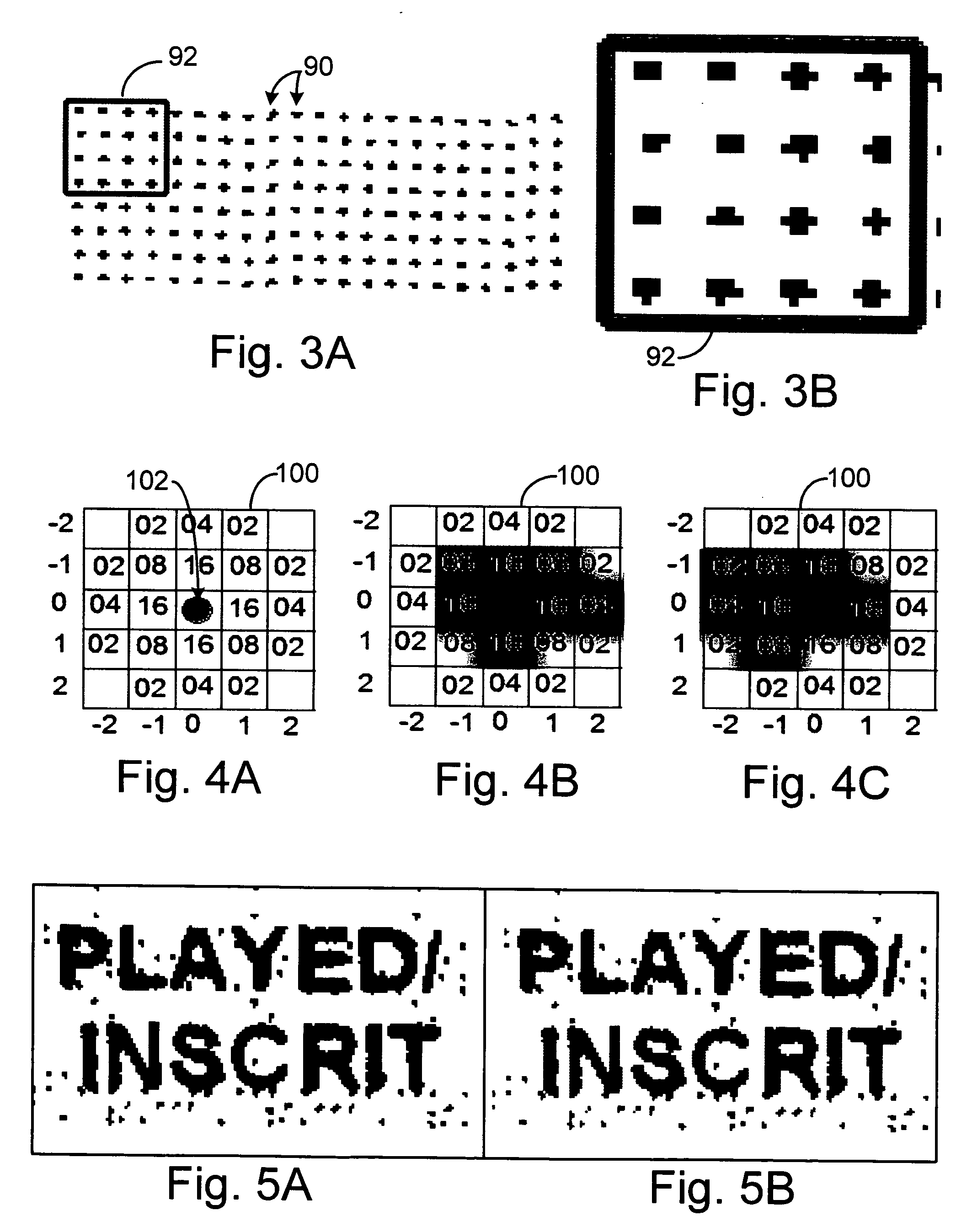Embedded optical signatures in documents
a technology of optical signatures and documents, applied in the field of document validation and authentication, can solve the problems of high cost, insufficient proof of authenticity, and high cost of adding paper stock security
- Summary
- Abstract
- Description
- Claims
- Application Information
AI Technical Summary
Benefits of technology
Problems solved by technology
Method used
Image
Examples
Embodiment Construction
[0043] The present invention provides a method of embedding an optical signature into a document requiring authentication or verification, such as the scratch-off lottery ticket 10 in FIG. 1. In essence, a detectable optical pattern is embedded on the substrate of the document. The optical pattern encodes a mathematical value that can be reliably reproduced upon proper observation. An example of such an optical pattern is star-fields that can be measured through various means as is further described herein. The optical signature can be embedded over a large area of the document and viewing only a small portion of the pattern can provide enough of the signature to allow validation. The optical signature preferably does not interfere with the actual image on the document and can reside in the background in a steganograhic manner.
[0044] As can be seen in FIG. 1, the present invention is particularly advantageous in use under the scratch-off layer 12 of a scratch-off lottery ticket 10....
PUM
 Login to View More
Login to View More Abstract
Description
Claims
Application Information
 Login to View More
Login to View More - R&D
- Intellectual Property
- Life Sciences
- Materials
- Tech Scout
- Unparalleled Data Quality
- Higher Quality Content
- 60% Fewer Hallucinations
Browse by: Latest US Patents, China's latest patents, Technical Efficacy Thesaurus, Application Domain, Technology Topic, Popular Technical Reports.
© 2025 PatSnap. All rights reserved.Legal|Privacy policy|Modern Slavery Act Transparency Statement|Sitemap|About US| Contact US: help@patsnap.com



